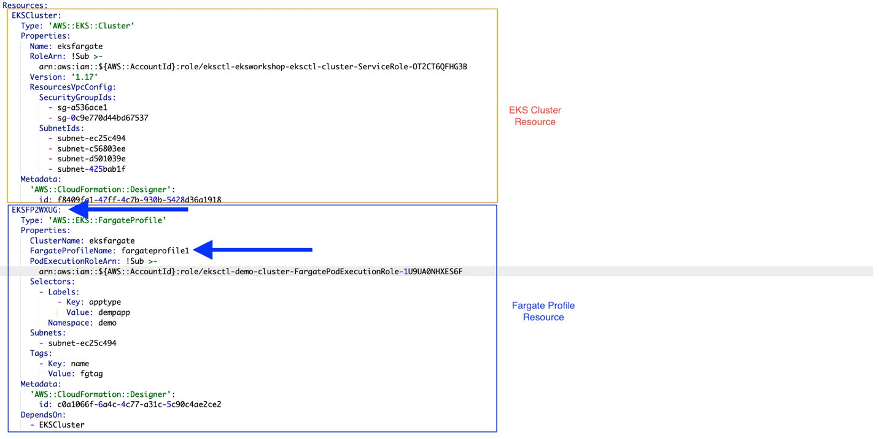Containers
Category: Technical How-to
Enabling mTLS in AWS App Mesh using SPIFFE/SPIRE in a multi-account Amazon EKS environment
Over the past few years, companies and organizations have been adopting microservice-based architectures to drive their businesses forward with a rapid pace of innovation. Moving to microservices brings several benefits in terms of modularity and deployment speed, but it also adds additional complexity that requires establishing higher security postures. For distributed applications spanning multiple, potentially […]
Red Hat OpenShift Service on AWS: private clusters with AWS PrivateLink
Red Hat OpenShift Service on AWS (ROSA) clusters can be deployed in a few ways, public, private, and private with PrivateLink. Public and private clusters both have the OpenShift cluster accessible to the internet and define whether the application workloads running on OpenShift are private or not. However, there are customers with a requirement for […]
GitOps model for provisioning and bootstrapping Amazon EKS clusters using Crossplane and Argo CD
Customers are increasingly using multiple Kubernetes clusters to manage their application delivery to different environments. Managed services like Amazon Elastic Kubernetes Service (Amazon EKS) help customers offload the onerous task of managing the Kubernetes control plane. But cluster operators face the challenge of managing the lifecycles of these clusters and deploying applications consistently to multiple […]
How to build your containers for ARM and save with Graviton and Spot instances on Amazon ECS
Amazon Elastic Container Service (Amazon ECS) is a fully managed container orchestration service that enables you to deploy, manage, and scale containerized applications. For the underlying compute capacity of an Amazon ECS cluster, customers can choose between different types and sizes of Amazon Elastic Compute Cloud (Amazon EC2) instances. For many years, machines based on […]
Creating container images with Cloud Native Buildpacks using AWS CodeBuild and AWS CodePipeline
Organizations using Amazon Elastic Container Service (Amazon ECS), Amazon Elastic Kubernetes Service (Amazon EKS), or other container orchestrators all face the same hurdle to getting up and running quickly: how do teams effectively package their application source code in a container image with speed and efficiency? This journey from “source to image” can challenge organizations […]
Container Insights for Amazon EKS Support AWS Distro for OpenTelemetry Collector
CloudWatch Container Insights collects, aggregates, and summarizes metrics from your containerized applications and microservices. Metrics are collected as log events using embedded metric format, which enables high-cardinality data to be ingested and stored in designated CW log groups at scale. Amazon CloudWatch then uses those embedded metrics to create the aggregated CloudWatch metrics from the […]
Implementing the Saga Orchestration pattern with Amazon EKS and Amazon SNS
This blog post proposes an ecommerce scenario with an Orders microservice, an Orders Rollback microservice and an Inventory microservice that communicate with each other. This communication happens while raising an order successfully or rolling back an order when the Inventory microservice reports an error. This communication is orchestrated with Amazon Simple Notification Service (Amazon SNS) […]
Introducing CloudWatch Container Insights Prometheus Support with AWS Distro for OpenTelemetry on Amazon ECS and Amazon EKS
You can use CloudWatch Container Insights to monitor, troubleshoot, and alarm on your containerized applications and microservices. Amazon CloudWatch collects, aggregates, and summarizes compute utilization information like CPU, memory, disk, and network data. It also helps you isolate issues and resolve them quickly by providing diagnostic information like container restart failures. Container Insights gives you […]
Use CloudFormation to automate management of the Fargate profile in Amazon EKS
Organizations are embracing microservices architectures and container-based deployments to gain agility, scalability, isolation, and separation of concerns. AWS Fargate, the serverless compute engine for running containers in the AWS Cloud, improves agility by taking away the undifferentiated heavy lifting of worker node provisioning and management. With Fargate, organizations can focus on building applications and application […]
Rolling EC2 AMI updates with capacity providers in Amazon ECS
When deploying containers to Amazon Elastic Container Service (Amazon ECS), customers have choices as to what level of management they want or need to have over the cluster compute. First there is AWS Fargate, which is a serverless compute engine that removes the need for customers to provision and manage servers. This approach simplifies the […]








